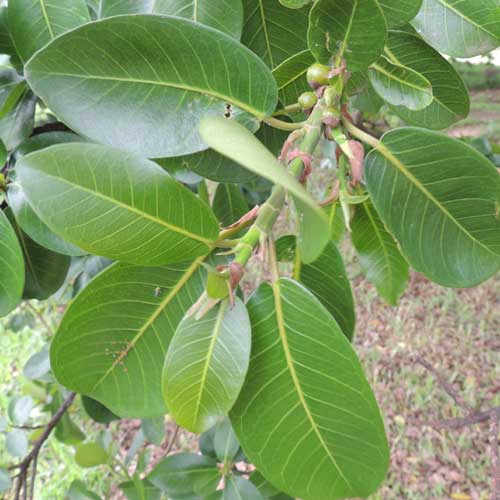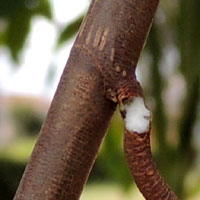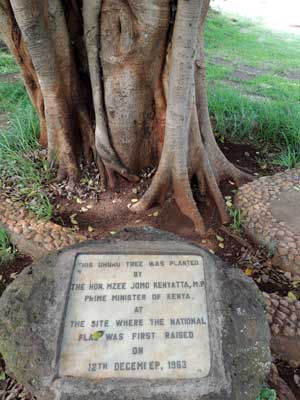Bark Cloth Fig
Common Wild Fig
Ficus thonningii
(Ficus microcarpa)

A Strangler Fig growing upon and with a Cape Fig at Uhuru Gardens, Nairobi, Kenya, March 2013.

TREE: Mature trees up to 30 m tall with spreading branches and smooth,
gray bark. Seedlings begin as epiphytes when birds/mammals leaves seeds on
branches of other trees. The plant eventually sends roots to the ground and may
eventually "strangle" the original host tree. In the photo below of the Uhuru
Tree the smooth root-stems that have reached the soil are lighter gray and for
now, narrow.
FLOWERS: Small greenish flowers go mostly unnoticed and are famously
pollinated by minute wasps.
LEAVES: Elyptical leaves have smooth margins. Stems and leaves ooze
milky latex when damaged/broken.
RANGE: Several related fig species have apparently been classified as F.
thonningii and some may be conspecific with Chinese Banyan, F.
microcarpa. I will revisit this page as published works offer some
clarity. Native to Kenya.
FRUIT: Fruit turn orange when ripe and soon attract many birds and
primates to feed. The seeds are thus spread to new locations and the seeds may
be deposited on the limbs of other fruit trees, including other figs.
UNARMED. No thorns, but latex can be irritating.

The Uhuru Tree was planted 12 December 1963. Sometime later the Bark-cloth Strangler Fig started in the crown as an epiphyte. Now the two trees are entwined and growing together.